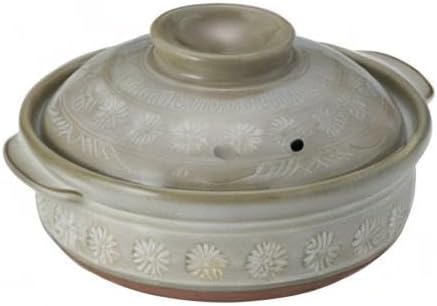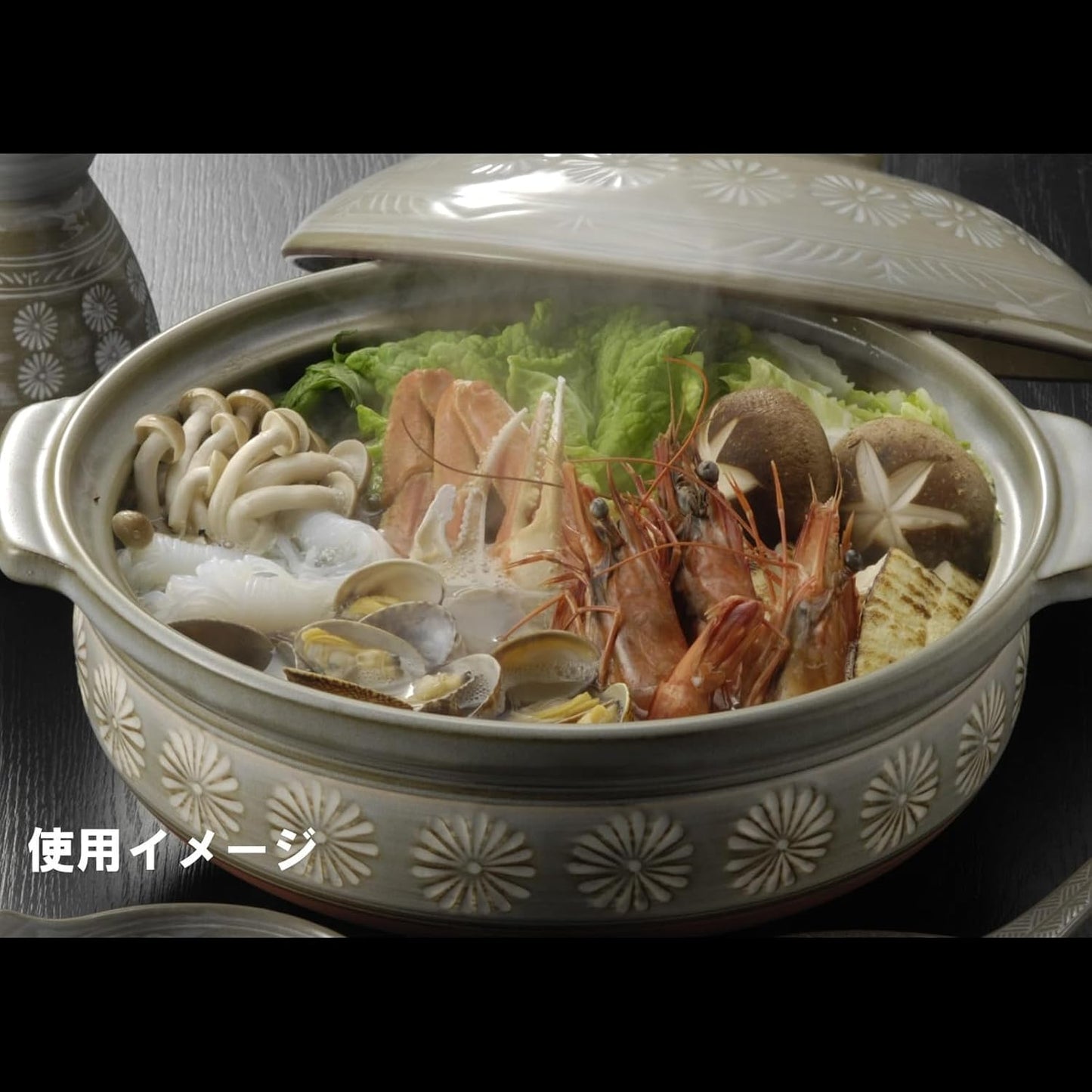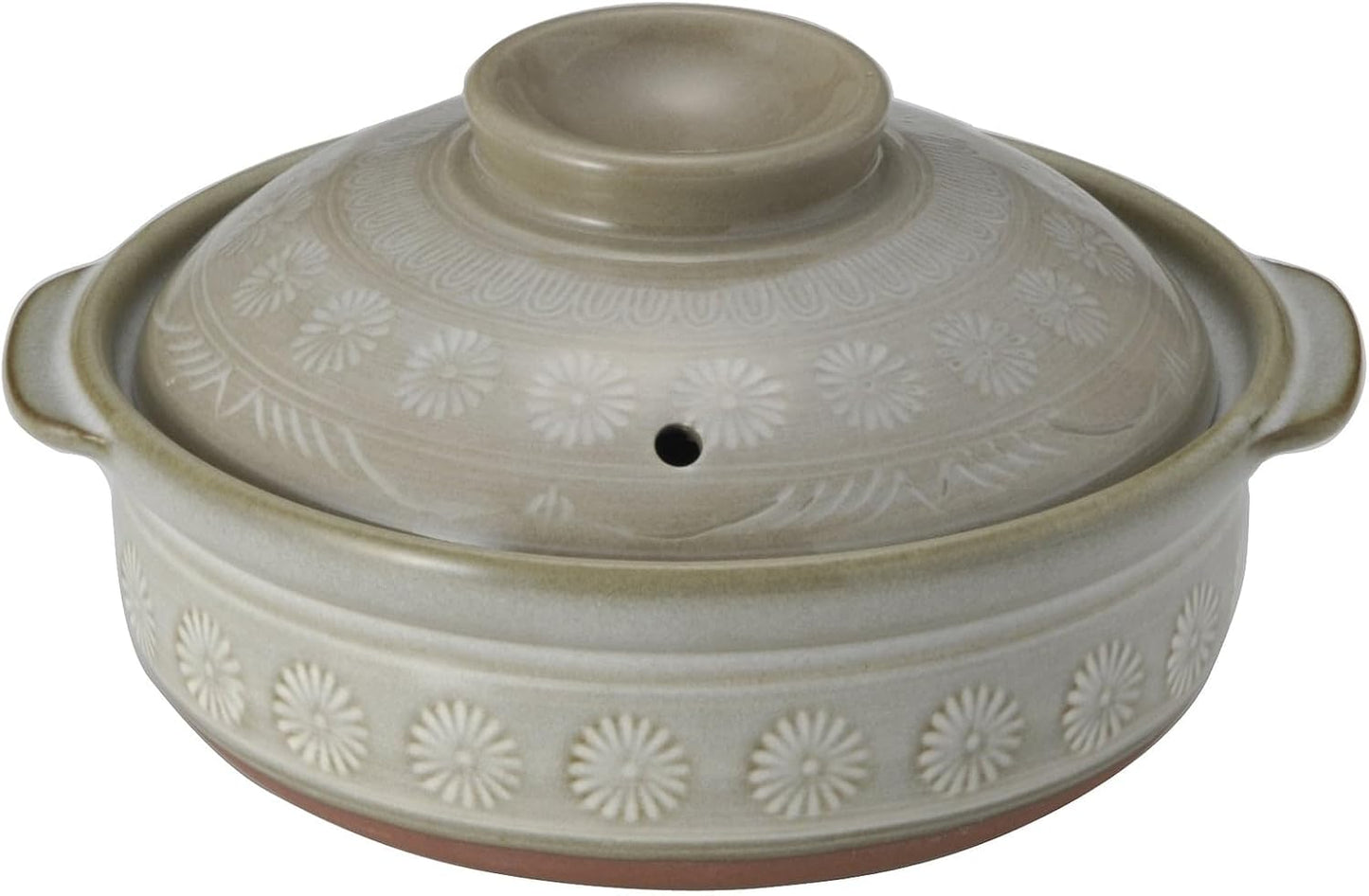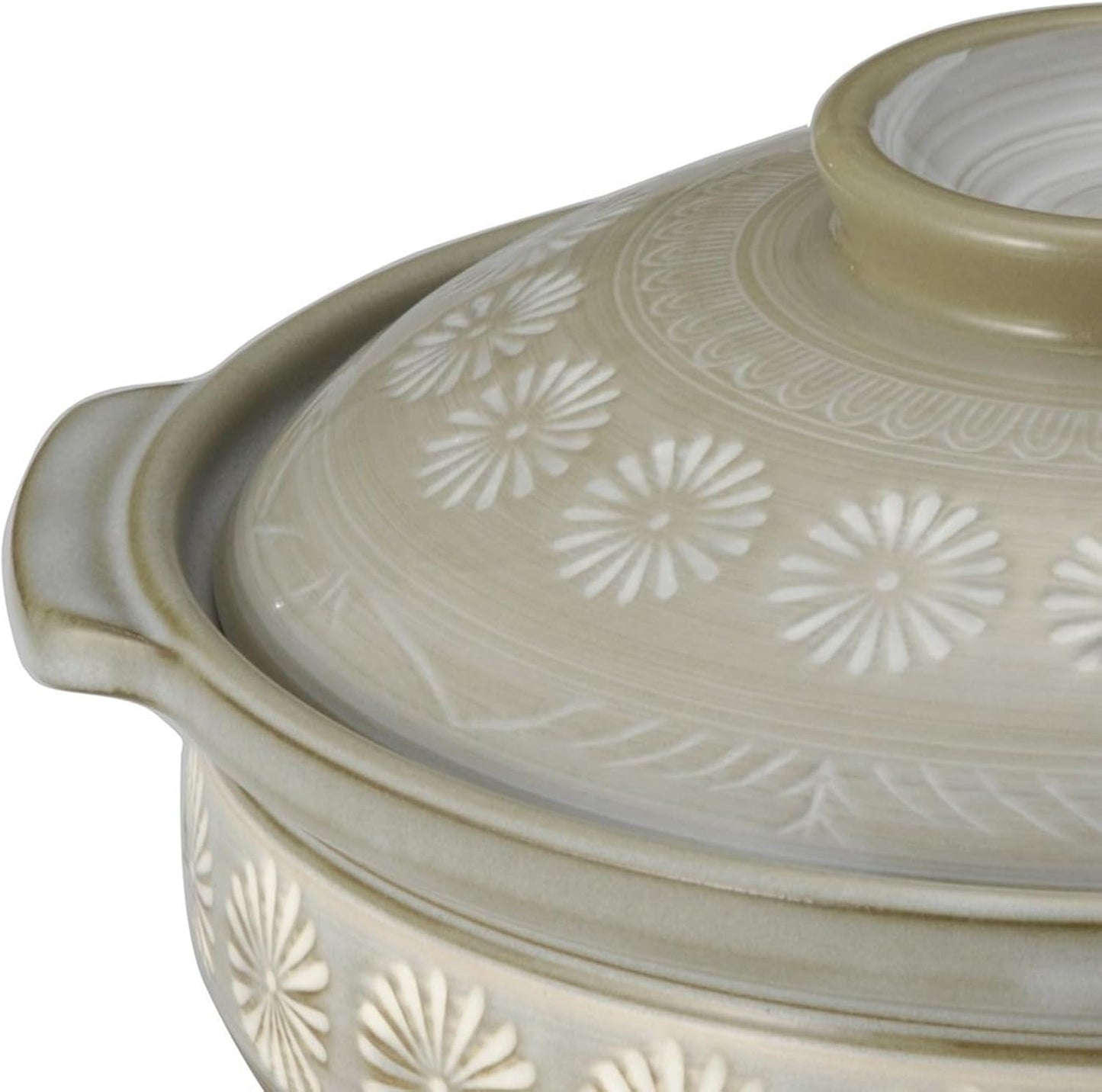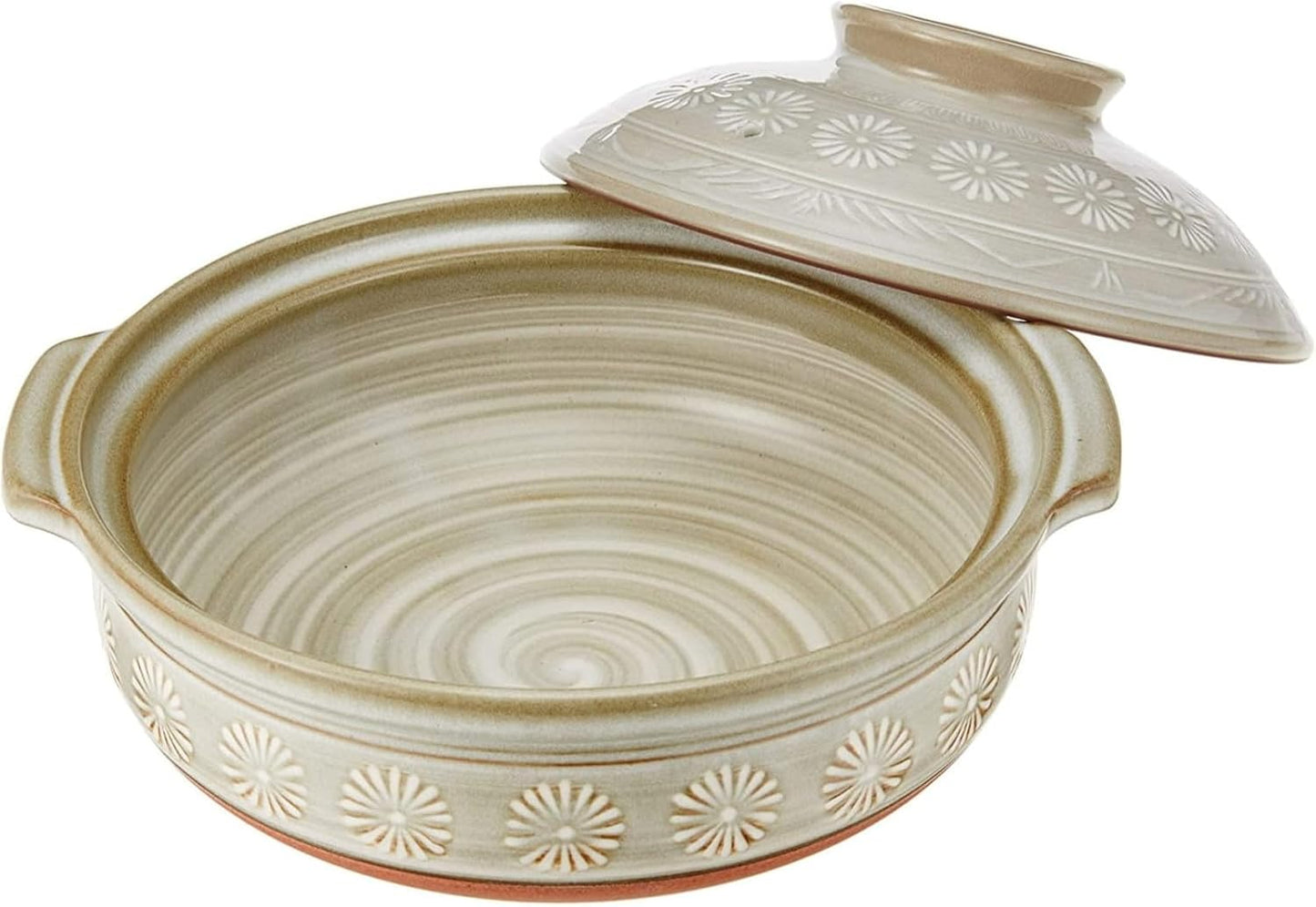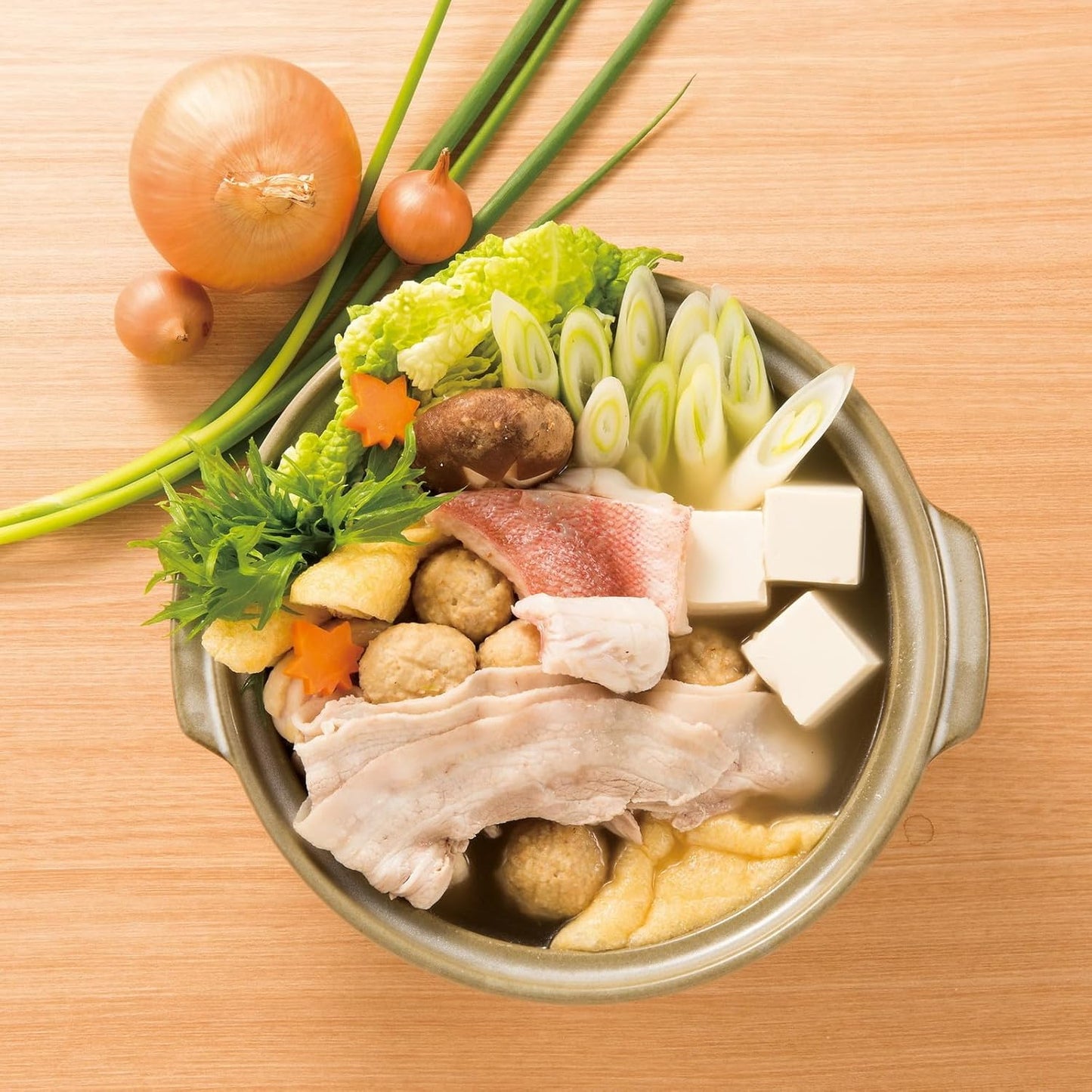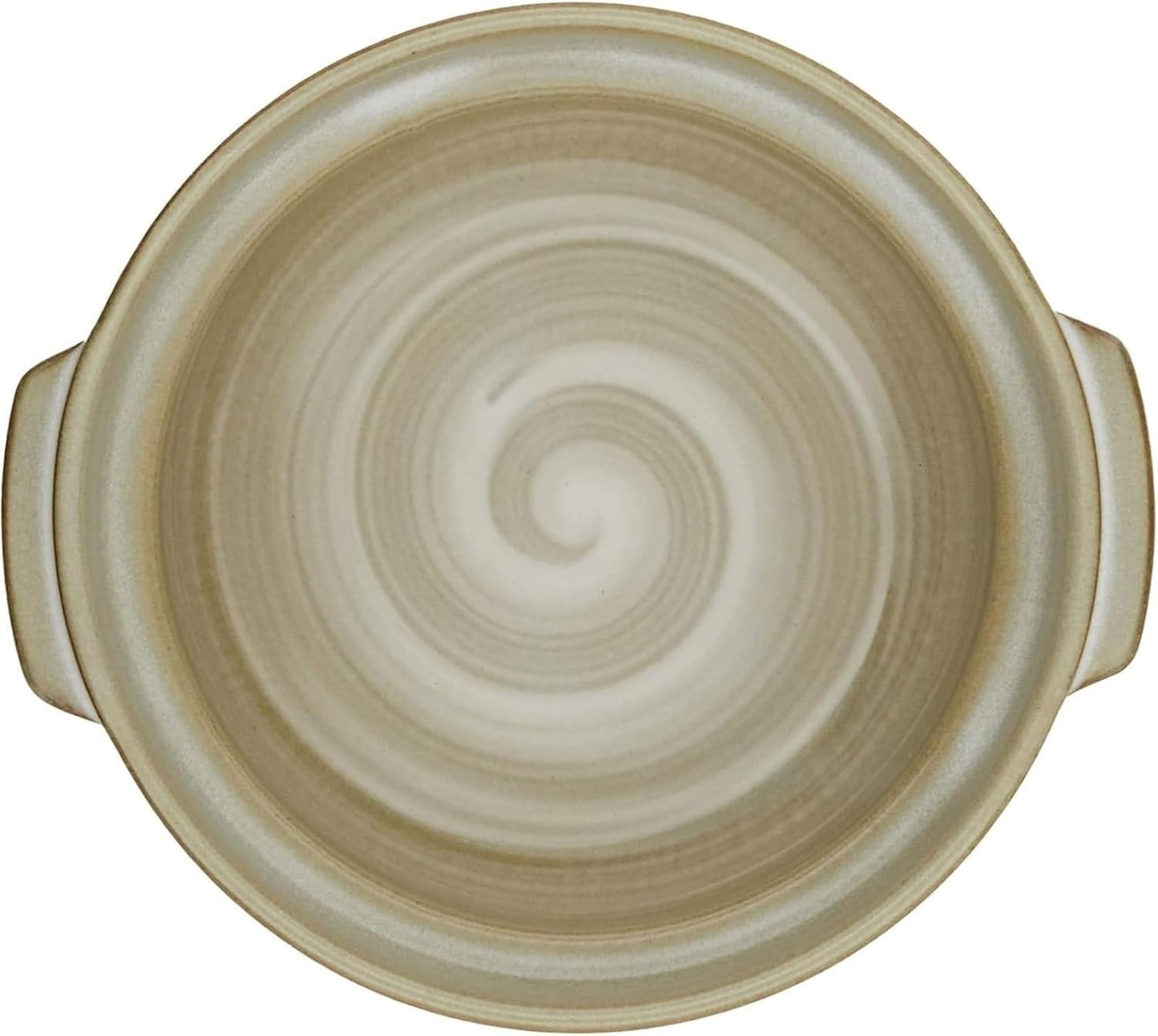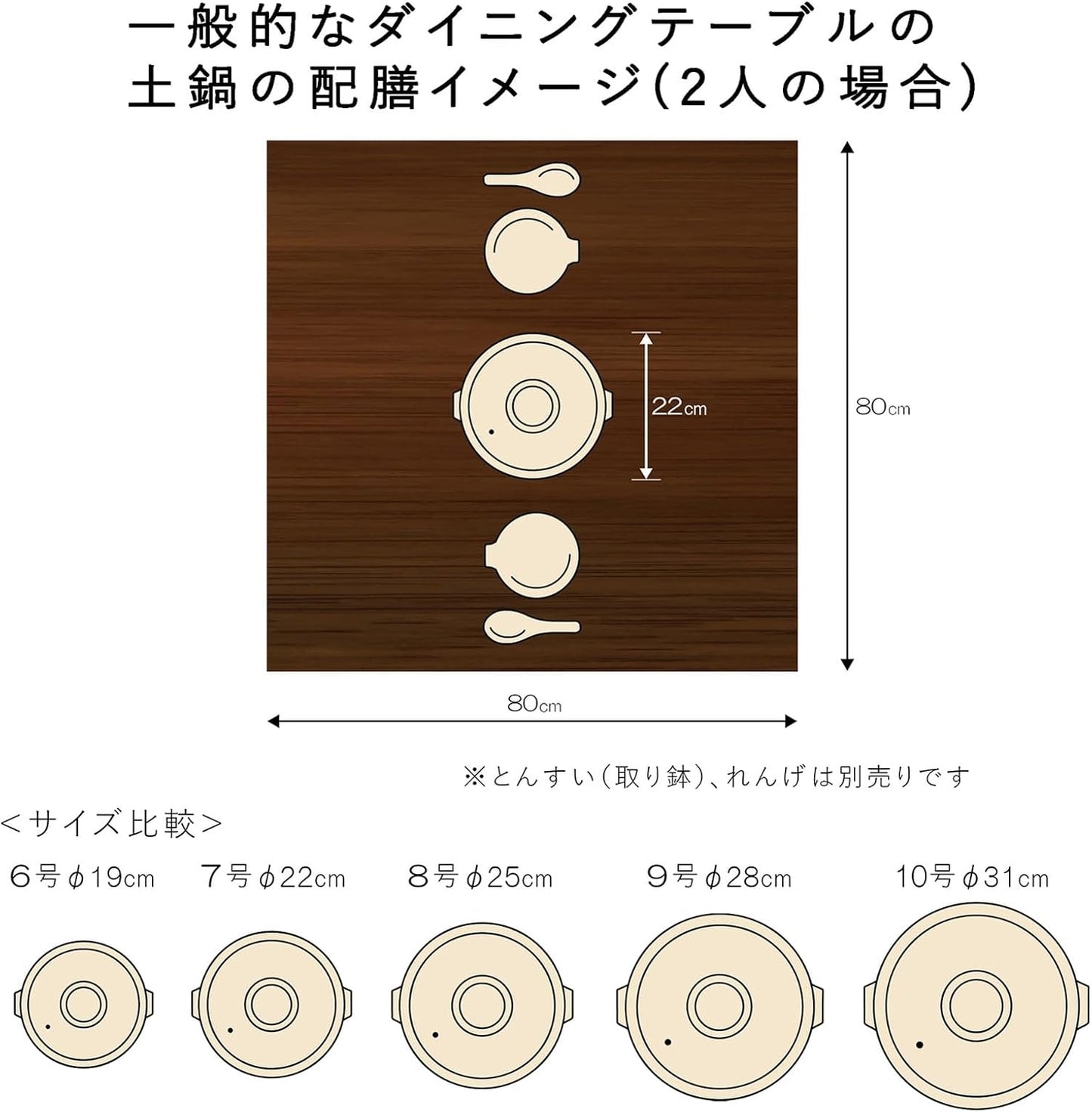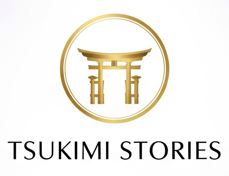My Store
Japanese Hot Pot Donabe Earthenware Grey Floral no. 7 for 2 people
Japanese Hot Pot Donabe Earthenware Grey Floral no. 7 for 2 people
Couldn't load pickup availability
Product description
Introducing Banko-yaki Ginpou Earthenware Pot no. 7 in grey with beautiful distinguishing floral pattern, made in Japan by Ginpo Touki Mishima, the top brand of earthenware pots.
Nabe (鍋) is a Japanese hot pot dish that’s a popular winter meal. The word nabe literally translates to "hot pot" in Japanese. Nabe is a versatile dish that can be customized with many different ingredients. Each region of Japan has its own specialty nabe. Nabe is easy to make and can be a healthy comfort food, regardless of the season. The general use of the nabe pot involves extensive use of ingredients like meat, fish, vegetables, and mushrooms that are cooked together in a pot with broth over a heat source.
The Hanamishima series features a large floral pattern in a calm white and grey colour gradation made with ceramic, and is loved for a wide range of uses from commercial use to household use, and is considered the gold standard for earthenpots.
This donabe pot can be used over an open flame, as well as in the microwave and oven. It is made of the highest quality petalite (heat-resistant material) and is fire-resistant. The infrared rays allow you to fully enjoy the deliciousness of your cooking in a clay pot. This donabe pot has an excellent heat retention means that the water will continue to boil for a while even after you turn off the stove.
Measuring approx. 22cm wide x 24.3cm deep x 12.5cm high (No. 7), this pot has a capacity for 1-2 people and weights approx. 1.46 kg.
This nabe pot will be great for the following Japanese-inspired dishes:
- hot pot
- udon
- steam rice
- steamed meat with veggies
Bankoyaki (bankoyaki) is rich in production of heat-resistant ceramics, including earthenware pots. Banko ware is the biggest feature of its high heat resistance due to its mineral known as Petalite. In particular, Hanamishima is made by Ginpo Pottery Co., Ltd. with the idea of "odour and stain resistant" that has been used in the production process and the formation of glazes. In addition to the wide variety of earthenware pot sizes, the Hanamashima series also comes in a wide variety of product variations.
Without a doubt, this item will be a valuable addition to your regular use kitchen gadgets.
Product features
- Model: no. 7
- Series: Hanamishima (floral pattern)
- Materials: Clay pot: heat-resistant ceramic, lid: ceramic
- Approx. dimensions: 22cm wide x 24.3cm deep x 12.5cm high
- Colour: grey
- Made by Ginpouka Mishima
- Capacity: 1.5 l
- Weight: 4.7 lbs (1.5 kg)
- Diameter: 21 cm
- Hand wash only
- Made in Japan
- Contents: 1 x Japanese Hot Pot Donabe for 2 people
Further information
Nabemono ((鍋物, なべ物 nabe "cooking pot" + mono "thing"), or simply nabe, is a variety of Japanese hot pot dishes, also known as one-pot dishes and "things in a pot".
The nabe pot is often placed in the centre of a table so diners can cook and eat together. Diners use a ladle to scoop cooked ingredients into their own bowls Nabe is often eaten with rice. Condiments like grated radish, ponzu, yuzu kosho, mustard, and shichimi may be served for diners to customize the flavour. Common proteins often include beef, pork, chicken, fish, shrimp, scallops, clams, mussels, or squid.
Common vegetables include mushrooms and other ingredients The broth can be seasoned.
Banko Ware Ginpo Hana Mishima Series
Ginpo Hana Mishima series is the leading earthenware manufacturer of earthenware co., Ltd. and has a calming white and gray gradation and a large floral pattern.It has been loved since the 1970s and almost half a century.
The history of Banko ware (Bankoyaki) begins with the fusheyama Nunamiirozan, a gourmet merchant in the Edo period, which opened in Asahi town in Mie Prefecture.While the country of origin of ceramic is often derived from the region, he named "Banko Faith" and "Banko" in hoping his work is "a great manifestation for all times".
Bankoware has never gone but it revived half a century, and now it is famous for its earthenware that boasts 80% of shared nationwide pots, heat-resistant pottery, and deep purple teapots are known for. In 1979, it was designated as "Banko Waki" in Yikkaichi, a traditional craft of the country.
Share
